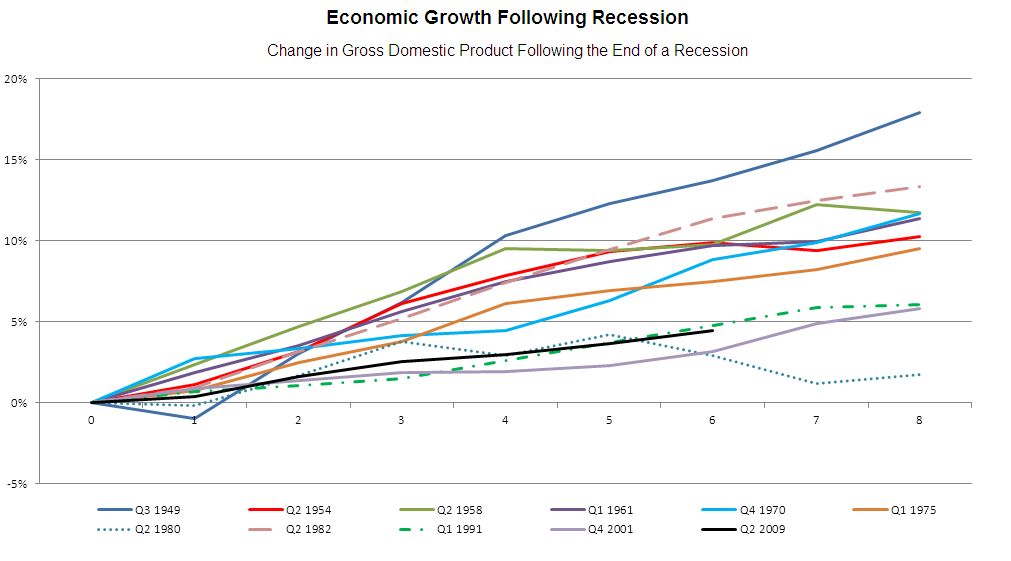According to the National Bureau of Economic Research the “Great Recession” officially ended during June 2009. The 18 month recession that began during December 2007 was the longest in the United States since the Great Depression. During the economic contraction consumer spending decreased in 5 out of the 6 quarters and gross private domestic investment expenditures (primarily expenditures by firms on property plant and equipment, changes in inventory and residential buildings) decreased during each of the six contractionary quarters. These two components account for around 80% of total economic activity as measured by of Gross Domestic Product (GDP).
Beginning with the third quarter of 2009 the United States economy has expanded every quarter. The growth has primarily come from the rebound in consumer spending and gross private domestic investment.
Click to enlarge chart
During and after the worst recession since the Great Depression, the United States enacted many expansionary policies. Fiscally, stimulative acts such as the American Recovery and Reinvestment Act of 2009 and the 2010 Tax Relief Act were passed in an attempt to create jobs, increase consumer spending and promote investment. Monetarily, the Federal Reserve has cut and maintained the federal funds interest rate at 0%. Currently the Fed is in the midst of a second quantitative easing program in which the Fed is purchasing hundreds of billions of dollars worth of securities from the public market.
All of these extraordinary policies are not typical, either during or after a recession in the United States. With these programs in mind it is illustrative to compare the current economic expansion to all other post World War II recoveries. As depicted in the chart below the current rebound in economic activity, through December 2010 is trailing all but the recoveries in 2001 (a shallow recession) and in 1980 (the first of two back to back recessions). The economy continues to expand, however it has been at a slow pace, historically speaking and with the help of numerous expansionary policies.
Click to enlarge chart
Time zero in the chart above depicts the quarter in which NBER declared a recession over

